COMPARING COSWORTH FORMULA 1 ENGINES

The Cosworth DFV and the CA engines represent bookends of nearly half-a-century of normally aspirated Formula One engines. These two engines allow for a discussion of how Cosworth was able to double both engine speed and power output, as well as guarantee a staggering threefold increase in engine life. In this special tech feature we’ll compare these two engines, taking a closer look at some of the critical components.
An Icon in F1 History – the DFV
Very few companies can survive more than 60 years of trading and still follow the founders’ original mission intent. In the cut-throat world of motor racing this is an exceptionally rare feat, and one only has to look at a race report from half-a-century ago to see that most of the teams and engine suppliers of the time have since disappeared, falling foul of financial setbacks, changes in regulations and necessary diversifications away from motorsport.
Yet one company has flourished since its inception in 1958 and can still claim to be true to its roots. That company is Cosworth, built on the foundation that “it must be possible to make an interesting living messing around with racing cars and engines”, as decreed by founders Keith Duckworth and Mike Costin.
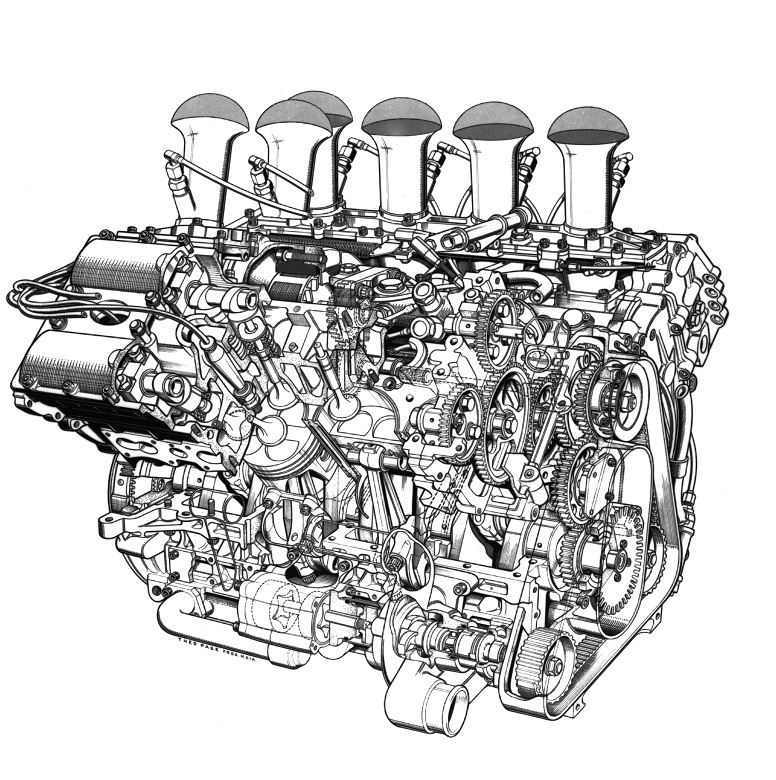
In 1967 Cosworth launched the DFV into Formula 1, initially for Team Lotus, and it instantly became a race winner. The following year the DFV was made available to other teams, and it went on to become the most successful engine ever in the history of Formula 1, scooping 155 wins, 12 drivers titles and 10 constructors titles.
The first DFVs might only have been able to delivery just over 400 bhp and reach 9,000 rpm to start with, but as each failure mode was methodically overcome (starting with the valve spring, then torsional gear drive problems), power and speeds gradually rose. By the time the DFV had finished active service in 1985, peak speed had topped 11,000 rpm and power was in excess of 500 bhp.
Working in conjunction with Lotus, the DFV was the first successful Formula One engine designed to be a fully structural member of the chassis, with mounts on the heads, cylinder block and sump connected to the chassis and gearbox bulkheads.
The DFV had a V8 configuration, with the two banks separated by a vee angle of 90 degrees, and for various reasons had the air intake to the two cylinder heads in the centre vee and the exhausts on the outside of each bank, running down either side of the engine below the heads.
The auxiliary water, oil and scavenge pumps were housed on either side of the cylinder block, tucked away underneath the exhausts and driven by a belt that in turn was driven by the nose of the crankshaft. The drive to the camshaft gears was via a series of gears at the front of the engine, again driven from the crankshaft nose. In the centre vee sat the alternator and fuel pump assemblies.
The Need for Speed – the CA
Some 40 years later, Cosworth launched what would turn out to be their final V8 Formula 1 engine, codenamed the CA. Formula 1 engine regulations had gone through many changes since the advent of the DFV, with brief interludes of turbocharging in the mid-80s, followed by a return to normally aspirated 3.5 litre engines up until the end of 1994, and then 3 litre engines in various configurations.
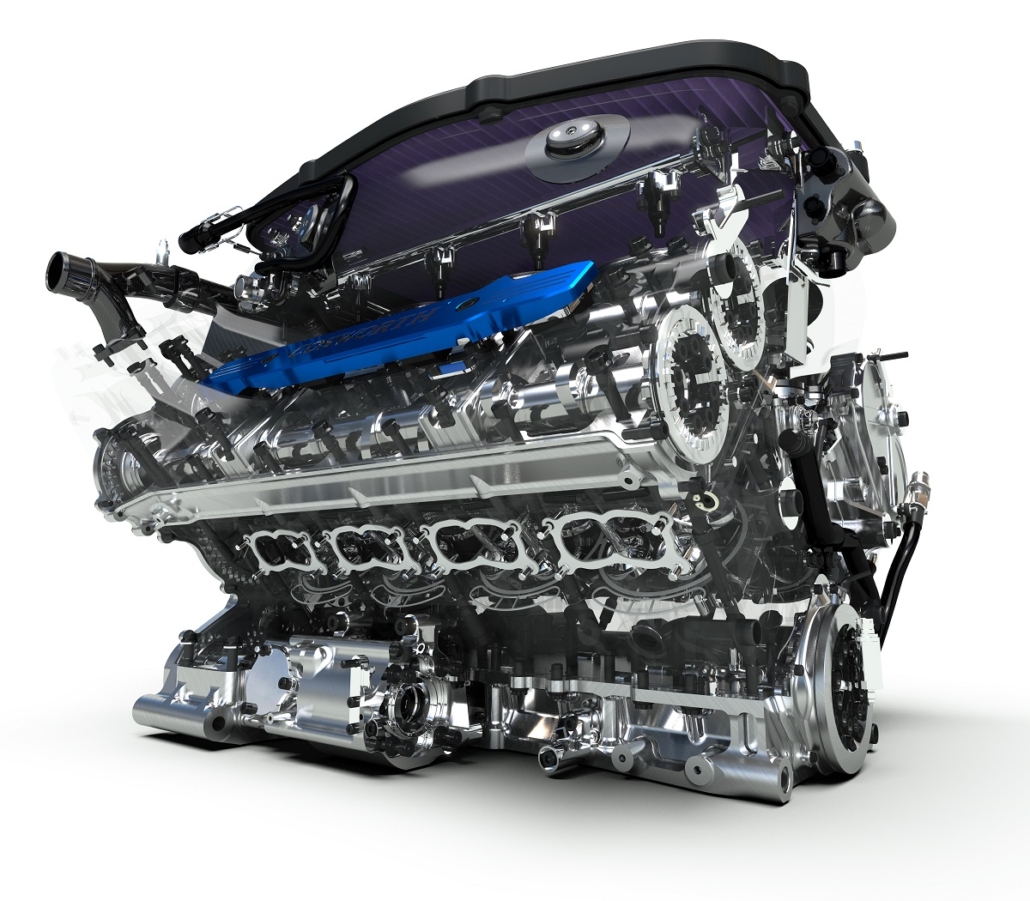
When the CA was first launched in 2006, and with no regulations capping speed, a mind-boggling and class-leading 20,000 rpm was attainable in qualifying, and by the end of that same season the CA could run up to that speed over an entire race distance. Frustratingly though, regulations aimed at reducing soaring development costs had capped the maximum engine speed to 18,000 rpm when Cosworth returned to Formula One with a modified CA in 2010.
Even so, peak power of 780 bhp was attainable, almost twice that of the DFV when it was first launched, despite a reduction of 14% capacity. Perhaps more impressively, there was a huge jump in engine mileage. The DFV competed at a time of unlimited engine changes, and hence only had to be capable of completing one race distance. Fast forward to the 2010-2013 era, and drivers were only allowed 8 engines for the entire season, which meant that the CA had to be capable of completing around 1,500 miles between rebuilds.
Comparing the DFV and CA
What is perhaps surprising is that the CA’s overall architecture was almost identical to the DFV’s, save for the removal of belt drives and the repositioning of the alternator and fuel pump (in subsequent Cosworth Formula One engines the alternator was relocated to the back of the left-hand auxiliaries, while the fuel pump ended up submerged in the car’s fuel tank and driven by a quill shaft from one of the drive gears on the front of the engine). While Duckworth would certainly never claim to have pioneered this layout, it is interesting to note that most Formula One engine manufacturers later followed a similar approach.
A comparison of DFV and CA engine weights wouldn’t necessarily be fair, as in addition to the reduction in capacity, the CA’s weight was mandated by the regulations, which specified a minimum dry weight of 95 kg. However, it is worth noting that the corresponding weight of the DFV would have been around 168 kg when it was first launched.
The regulations that governed the design of the CA also defined a minimum height of the centre of gravity from the bottom of the sump at 165 mm. As this figure was easily achievable on the CA, any weight-saving requirements were rendered unnecessary, hence extra material in the heads and cam covers could be used to improve the engine’s overall stiffness.
Cylinder Block Comparison
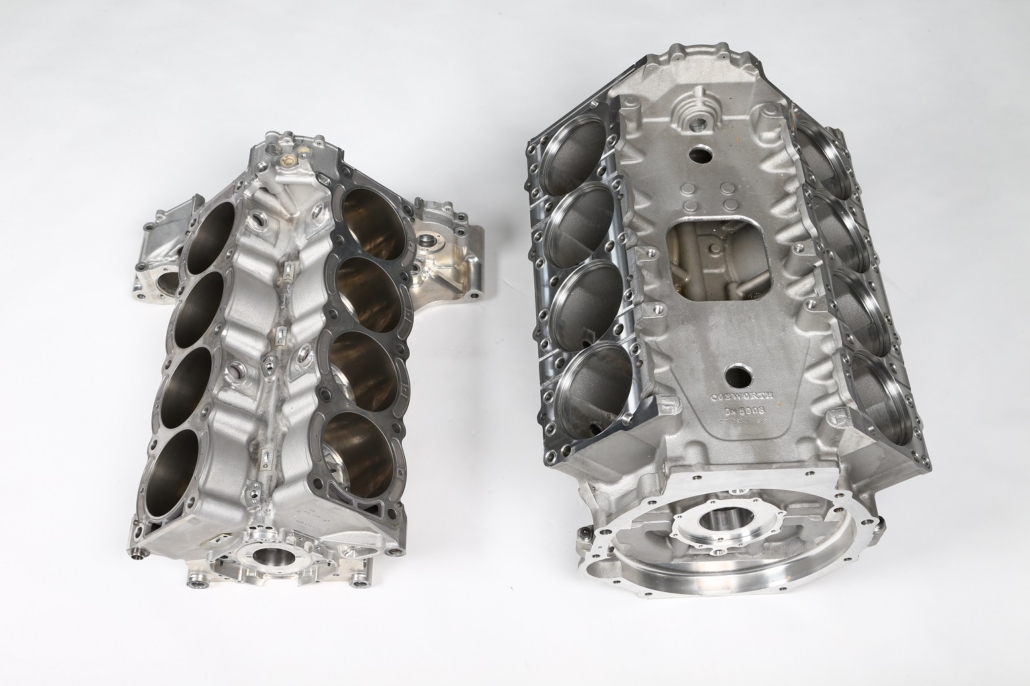
The most striking difference between the cylinder blocks is in their respective sizes. The DFV block stands almost twice as high as that of the CA, due in part to the height of the sump. The distance from the crank centreline to the bottom of the sump for the DFV was more than 133 mm; for the CA that fell to just 58 mm (the minimum allowed by the regulations).
Some of this reduction was made possible by gradually miniaturising the bottom-end geometry over successive engine designs, such as shrinking the crank counterweights following the shift to bolt-on tungsten weights. Of equal significance was lowering the piston stroke (64.77 mm for the DFV versus 39.77 mm for the CA) thanks to an increase in cylinder bore size and a reduction in capacity.
There was a marked increase in bore size from the DFV to the CA, 85.67 mm for the DFV compared with the CA’s 98.0 mm, as dictated by the regulations. Despite this, the CA block is slightly shorter in length, as both engines have almost the same bore spacing. The distance between the walls of the bores could be reduced on the CA because it ran with coated parent metal bores, whereas the DFV block was an open-deck variant containing cast-iron cylinder liners.
Both blocks were cast from aluminium alloys, LM25 TF for the DFV and a similar in-house derived aluminium alloy for the CA. Cosworth actually experimented with magnesium cast blocks and cylinder heads for the DFV during the 1970s, but that was soon abandoned owing to the increased complications that came when using magnesium. In essence, the magnesium blocks and heads were problematic because of the large difference in thermal expansion coefficient values for the magnesium material, the steel main bearings and the nickel-aluminium bronze alloy valve seats.
Cylinder Head Comparison
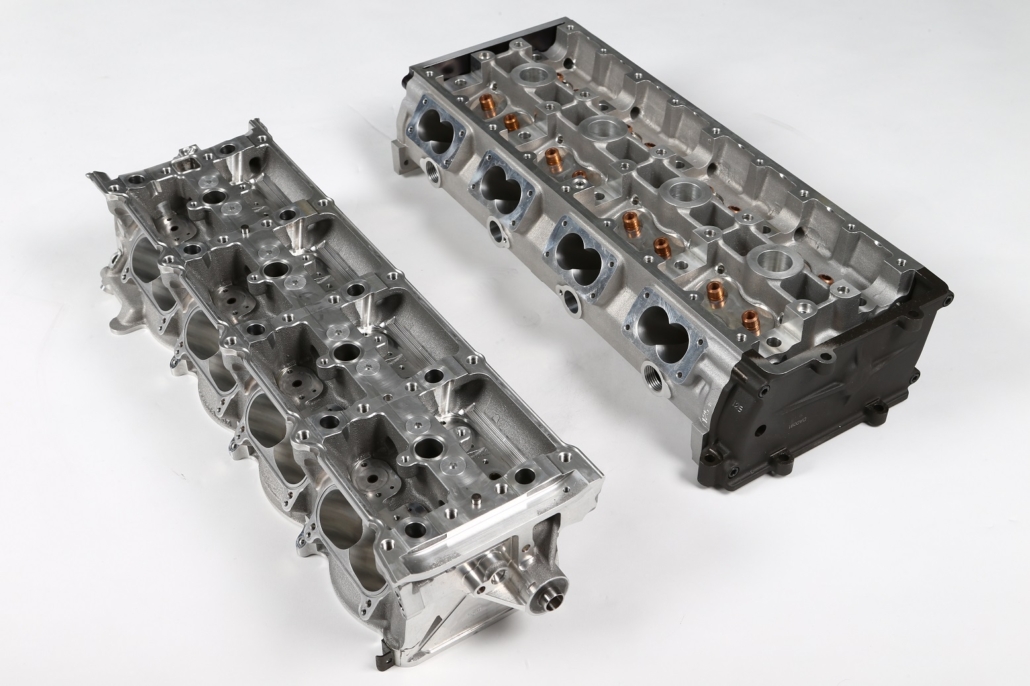
Duckworth famously remarked that the DFV was the first race engine to incorporate a narrow included valve angle (the angle between the inlet and exhaust valves). At the time, rival engines had valve angles of around 60 degrees, but Duckworth sought to reduce this to give a shallower pent-roof chamber. The DFV was designed with an included valve angle of 32 degrees – compare this then to only 18 degrees on the CA.
Actually, the CA had compound valve angles, with both the inlet and exhaust valves also inclined 6 degrees apart along the crankshaft axis. The switch to a compound valve angle improved the shape of the combustion chamber on the CA, plus an opportunity to make a small increase in inlet and exhaust valve diameters.
Like the DFV, the CA cylinder head featured a separate cam carrier – in the case of the CA, this was necessary to be able to package the compound valve angles. The CA heads featured a pneumatic valve return system instead of conventional wire springs, which allowed the engine to run at such high speeds.
Piston Comparison
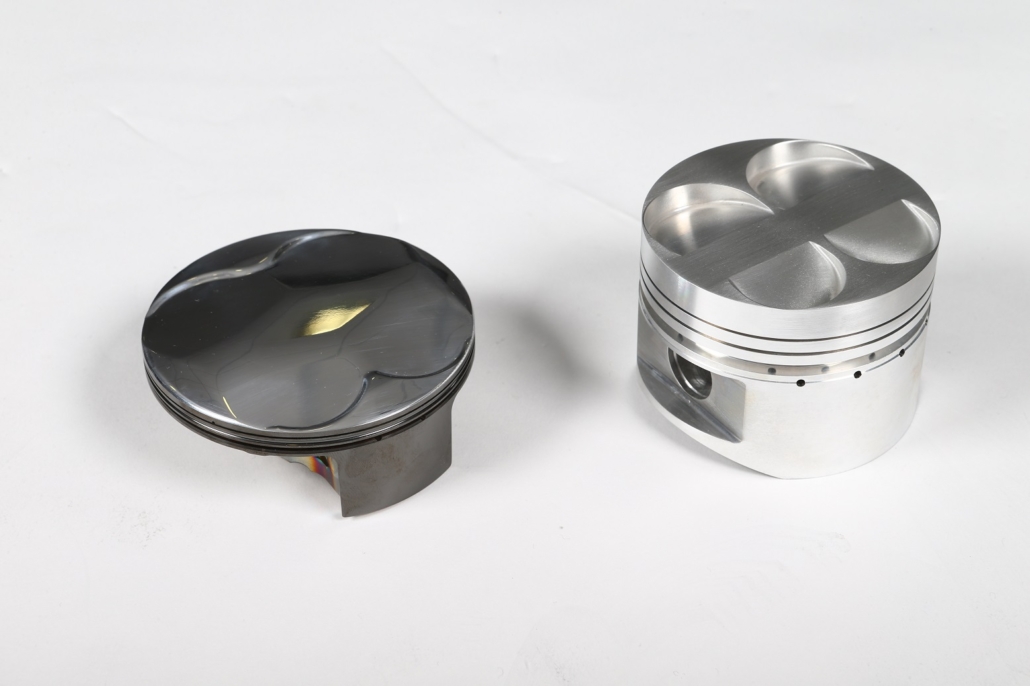
Thanks to the tightening up of the included valve angles in the cylinder head, the CA piston crown didn’t need deep valve pockets, as seen on the DFV. Instead, the crown was almost flat, with shallow pockets to clear the valve heads. The lack of sharp edges and pockets in the crown had a huge beneficial effect on good flame propagation and the elimination of detonation.
Piston material was largely unchanged from the DFV to the CA, thanks to the CA’s regulations banning the use of exotic materials such as aluminium beryllium and metal matrix composites. The DFV piston forging used a grade of RR58 aluminium alloy that had originally been developed by Rolls-Royce. By the time the CA was designed, Cosworth had already defined a confidential proprietary blend of aluminium alloy.
Another change that was quite noticeable when comparing the two pistons was the undercrown design, which on the CA was an elaborate arrangement of highly polished ribs and buttresses, optimised using various design techniques. The net effect was a piston that, although bigger on bore size, was almost half the weight of that from the first of the DFVs.
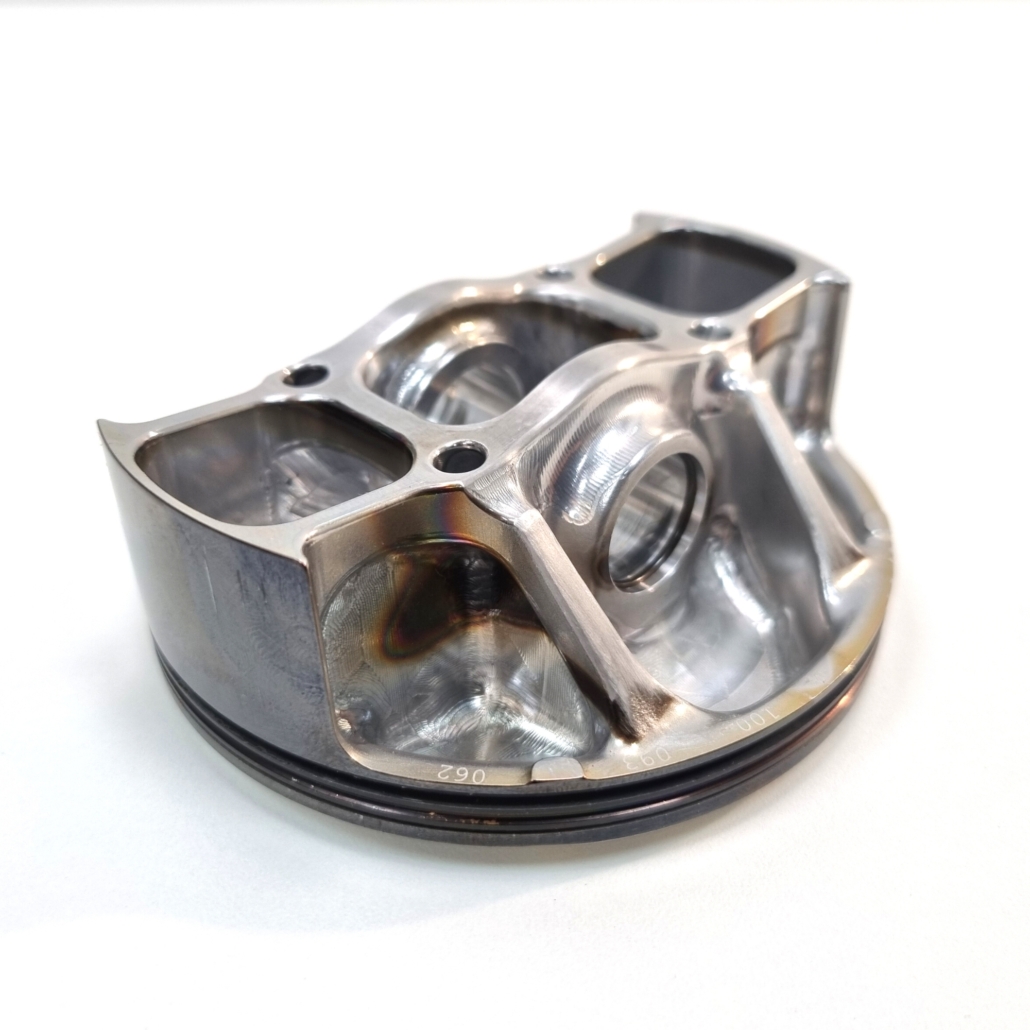
One other note was the amount of oil cooling supplied to the CA piston, via an array of squirt jets fed from the main oil gallery in the block. The correct cooling of the piston was a critical factor in achieving the required durability while also withstanding increased gas pressures and speeds.
DFV & CA Continuation
Whilst both engines might have ceased active service, they can still be heard roaring around race tracks today. The DFV is a popular engine for historic Formula 1 race categories, and some of the Formula 1 cars from the end of the V8 era are still being run by privateers with power from the CA.
Modatek actively supports customers with rebuilds of both engines, supplying genuine parts such as pistons, bearings, seals and countless other critical components. We even have an on-line shop for DFV parts.
We also sell race-used Cosworth CA engine parts in our Memorabilia section of our on-line shop.
This feature on the Cosworth DFV and CA engines is based on an article written by Modatek’s Matt Grant for Race Engine Technology, issue 100. You can purchase a back copy of this publication here: https://www.highpowermedia.com/Product/race-engine-technology-issue-100


